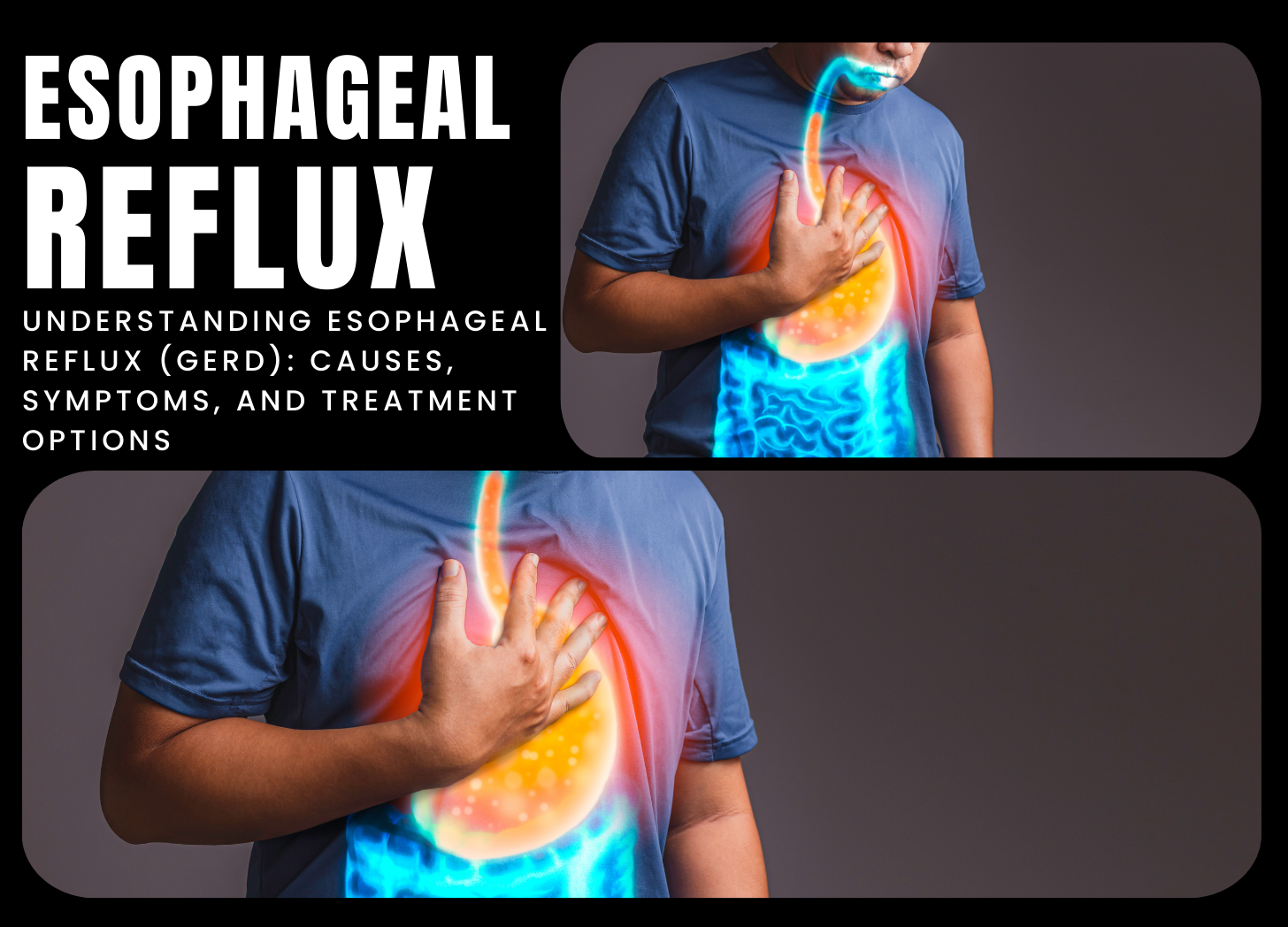Contact Us
Contact Us

Esophageal reflux, also known as acid reflux or gastroesophageal reflux disease (GERD), is a digestive disorder marked by the backward flow of stomach acid and contents into the esophagus, the tube connecting the throat to the stomach. Occasional reflux is common and can occur after consuming large meals, spicy or acidic foods, or lying down shortly after eating. However, frequent or persistent reflux symptoms may indicate GERD, a chronic condition that can lead to complications if left untreated.
The primary cause of esophageal reflux is the malfunction of the lower esophageal sphincter (LES), a muscular ring located at the junction between the esophagus and stomach. The LES typically acts as a barrier, preventing stomach contents from flowing back into the esophagus. When the LES relaxes or weakens abnormally, stomach acid and digestive fluids can back up into the esophagus, leading to irritation, inflammation, and symptoms such as heartburn, regurgitation, chest pain, difficulty swallowing, and coughing.
Several factors can contribute to esophageal reflux, including:
Symptoms of esophageal reflux can vary in severity and frequency. Common symptoms include:
Diagnosis typically involves a combination of medical history, physical examination, and diagnostic tests, such as:
The goal of treatment is to relieve symptoms, reduce esophageal irritation and inflammation, prevent complications, and improve quality of life. Treatment options include:
Lifestyle Changes:
Medications:
Surgical Interventions:
Esophageal reflux, or GERD, is a common digestive disorder characterized by the backflow of stomach acid into the esophagus, causing symptoms like heartburn, regurgitation, and chest pain. With proper diagnosis and treatment—including lifestyle changes, medications, and, in some cases, surgery—individuals can effectively manage their symptoms and prevent complications.
References:
Post a Comment